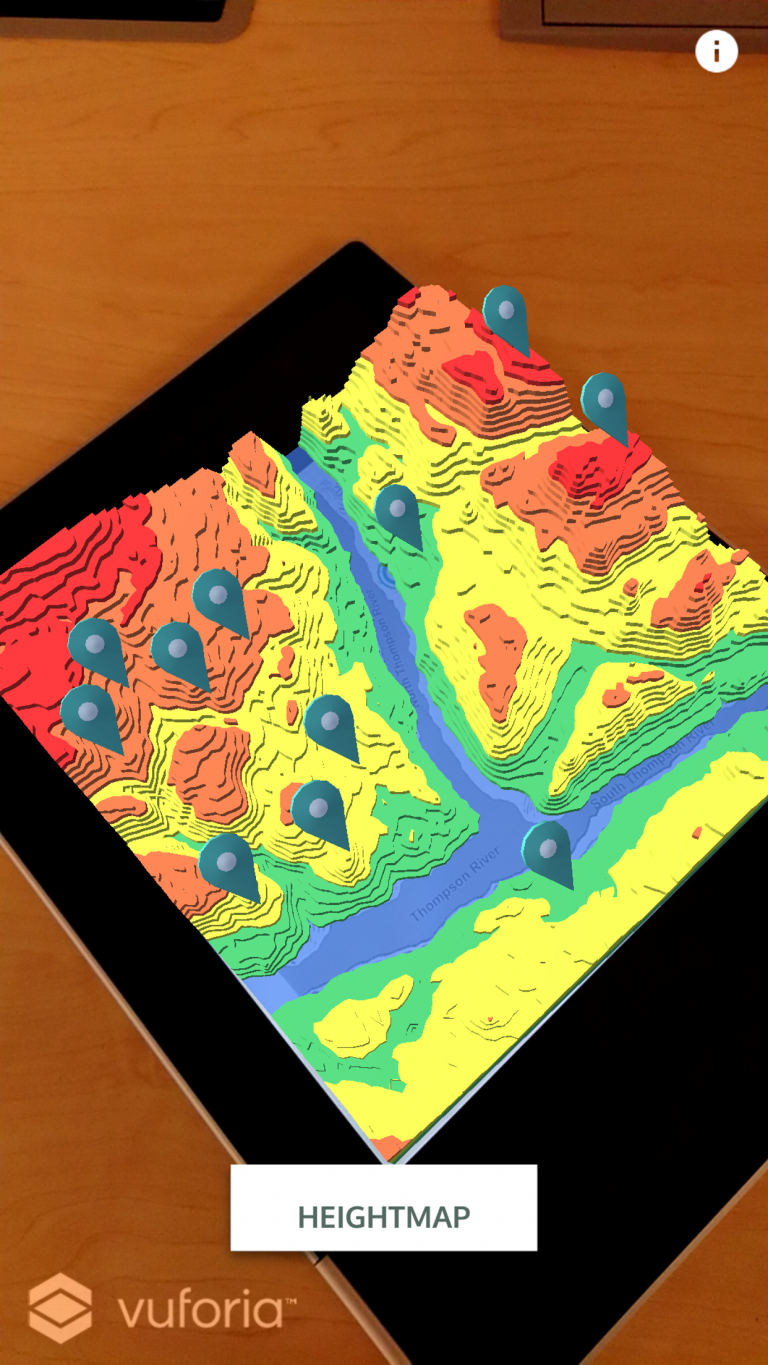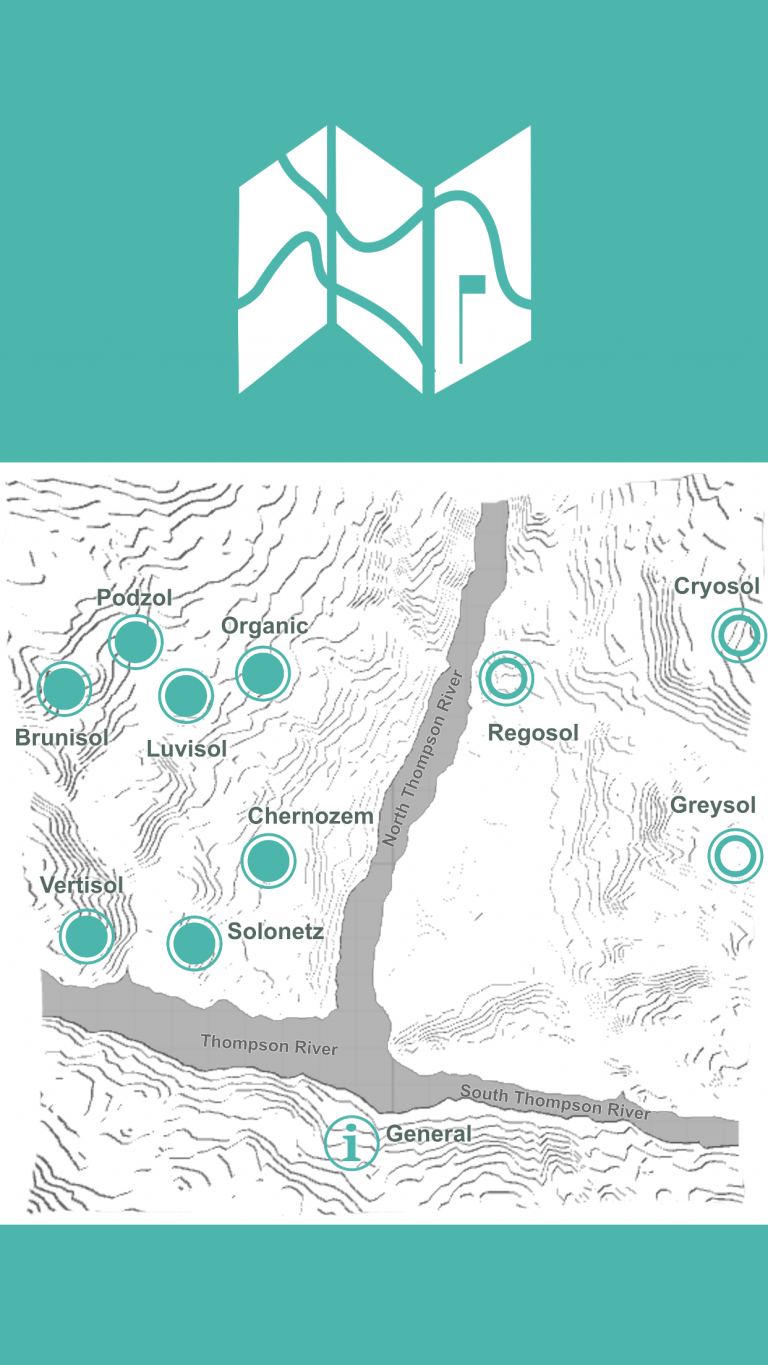Soil TopARgraphy

Background
As a part of the curriculum, students in the APBI 200 course learn about 10 soil orders, where the soil order is the broadest classification category in the Canadian system of soil classification. The topics of soil formation and classification are of direct importance for land use and management. Hence, our future land managers must have a solid understanding of soil formation and factors – like topography – that drive it. These topics are currently covered in the APBI 200 course through a series of lectures, laboratory activities, video footage, web-based resources, and a couple campus-based field trips. However, there is still a need to enhance students’ learning on this important topic, which led to the development of the Soil TopARgraphy app which brought in visual and tactile elements to the learning experience.
Augmented Reality (AR) is a technology that overlays digital enhancements on top of existing reality, in this case through your phone. With AR, different soil orders are shown within one real-life terrain across different parts of topography. We chose an area just north of Kamloops, British Columbia as an example of the terrain model since the region is characterized by a great diversity of soil types.
Description
With the Soil TopARgraphy app, which allows viewing and manipulating a terrain model, students will learn how topography impacts the distribution of soil orders through its effects on microclimate (i.e. temperature and water). Students will be able to view the terrain model with a color-coded elevation map (Image 1, 2) or a satellite image (Image 3). Furthermore, students can tap on flags to read about different soil orders, view images, and take a self-study quiz to reinforce their understanding (Image 4, 5).
- Image 1- Elevation Map
- Image 2- Satellite Map
- Image 3- AR Target
- Image 4- Information Panel
- Image 5- Self-Study Quiz
How It’s Made
We built two mobile apps, an AR viewer for students (Android and iOS) and an editor for the instructor (Android). The AR viewer is the app described above to view a predefined terrain. The instructor can customize contents with the supplementary editor app. They can update soil location on terrain, description, image, and quizzes for the student app.
Github – Soil TopARgraphy (Student)
- Tools: Unity, Vuforia, Blender, Mapbox
Github – Soil TopARgraphy (Instructor)
- Tools: Java, Kotlin, Android Studio
Progress as of April 2019:
After a year of development by 3 students, all the main features of Soil TopARgraphy are complete. The app was presented by Dr. Maja Krzic at the International Soils Meeting held in San Diego (Jan 6 – 9, 2019). It was also presented at the Multidisciplinary Undergraduate Research Conference in March 2019. The app has been continuously improved according to feedback.
Since September 2018, a team of 5 undergraduate students has been working on an Android app to allow instructors to edit the contents of the app. It is still in progress.
In May 2019, the app will be pilot-tested by 250+ students in APBI 200 – Introduction to Soil Science Course.
Install onto Your Device:
Soil TopARgraphy can be installed on Android phones on Google Play, iOS phones on the Apple App Store, or by scanning the QR code below.
How to use the App:
After installation, follow the onboarding instruction. When you get to in camera mode, point the camera at the following target image (Image 6) to create the terrain.

Share your Feedback!
The app is being tested by teaching fellows, undergraduate, and graduate students, and modified based on the feedback received. If you have any feedback, feel free to share them here!
The Team
Faculty
- Dr. Maja Krzic, Faculty of Forestry | Faculty of Land and Food Systems
Students
- Daphne Liu, Team Lead & Developer (Jan 2018 to Sept 2019)
- Tiger Oakes, Developer (Mar 2018 to Aug 2018)
- Emma Ng, UX/UI Designer (Mar 2018 to Apr 2018)
- Daanyaal Sobani, Developer (May 2018 to Aug 2018)




